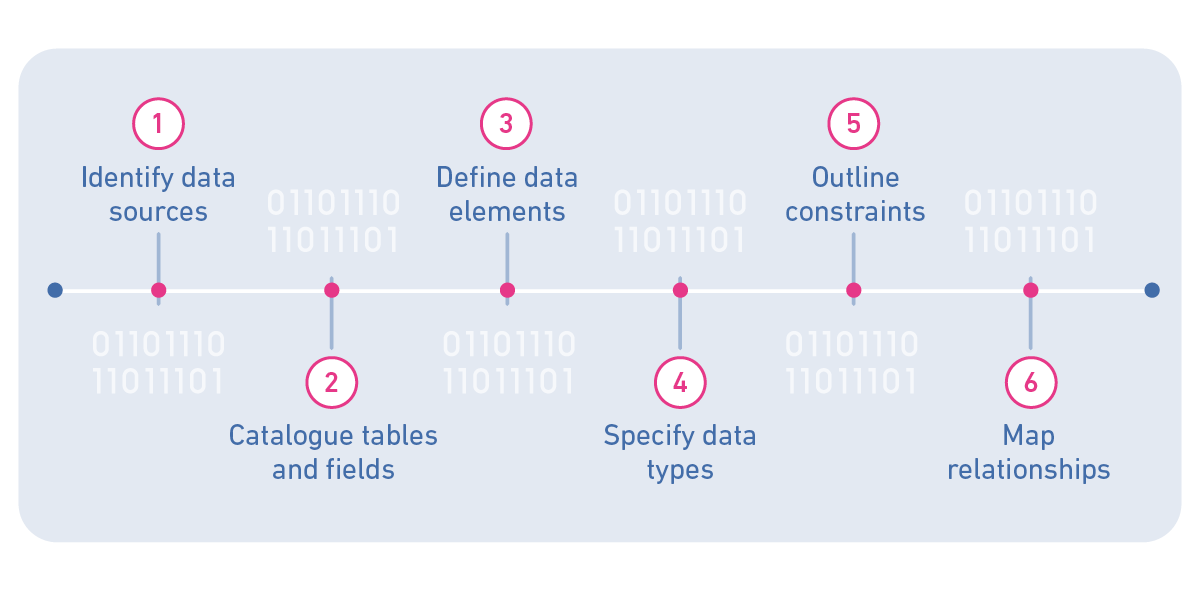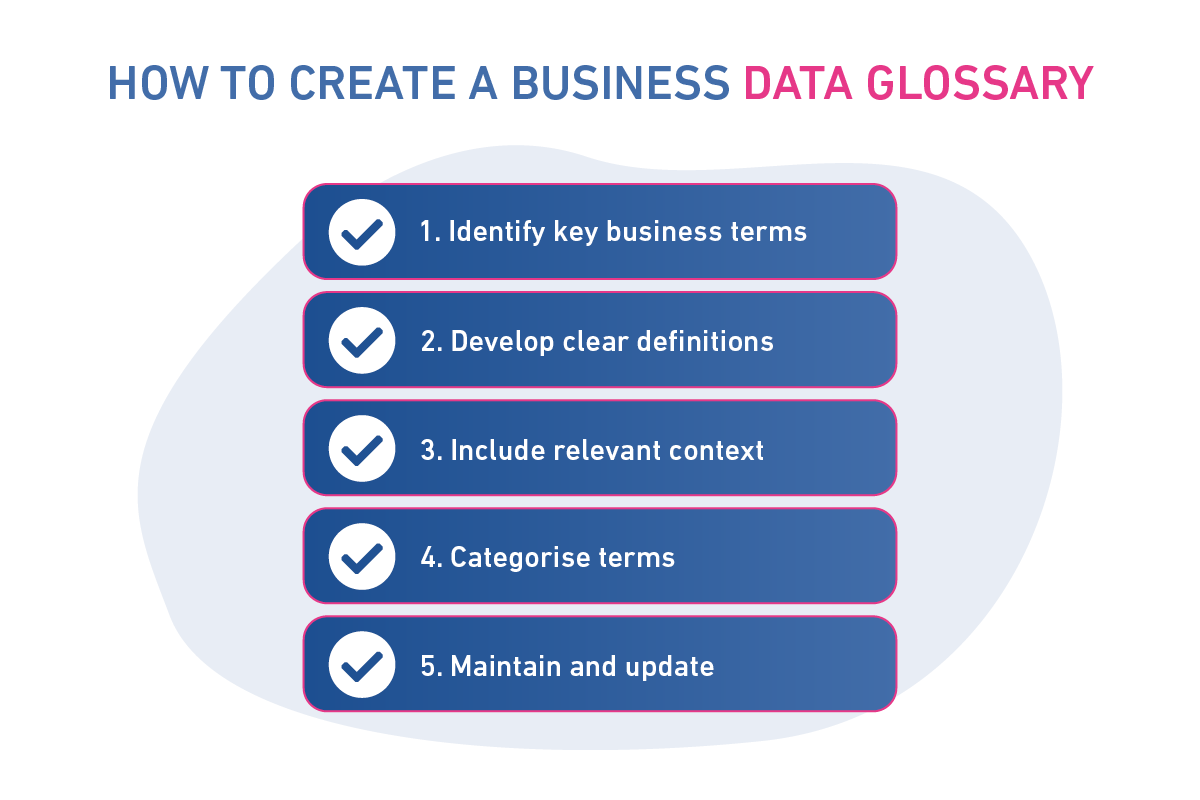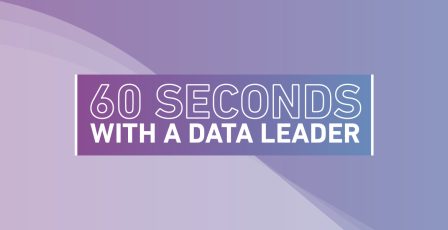Due to the increasing demand for data and data-driven decision-making, organisations are collecting information at an unprecedented rate. But without proper organisation and understanding, this data becomes a tangled mess that cannot be interpreted or effectively used. This is where data dictionaries and business glossaries come in – two key tools for making sense of your data ecosystem.
Data dictionaries and business data glossaries are powerful tools for unlocking the true potential of your data. By implementing both, you can achieve a well-organised and well-defined data environment, fostering collaboration, improving data quality, and ultimately driving better business decisions.
This guide tackles the confusion surrounding these terms, explaining what they are, how they differ, and how they can empower your business.
What is a data dictionary?
A data dictionary is a structured resource that provides definitions and descriptions for data assets, typically the elements within a database. It serves as a reference to ensure consistency and clarity in data usage across an organisation.
What is a data dictionary?
A data dictionary provides definitions and detailed descriptions for your data assets. It is similar to a technical manual for your data sets or data models, and will include information such as:
- Tables and fields: A breakdown of your databases, spreadsheets, or data warehouses, listing tables and their individual columns (fields).
- Data types: Explains the format of the data in each field (e.g., text, number, date).
- Definitions: Precise explanations of what each field represents and its purpose.
- Constraints: Details any restrictions on data values (e.g., a field for age can only accept values between 1 and 120).
- Relationships: Shows how different tables or datasets connect to each other.
What are the benefits of a data dictionary?
A valuable tool used for the management and organisation of data, data dictionaries are key for ensuring data quality and management. They also provide benefits to organisations by ensuring data consistency and accessibility.
Improving data consistency
A data dictionary ensures everyone uses the same standardised definitions and formats. This prevents errors and misunderstandings as well as reduces inconsistencies and errors throughout the organisation. Because everyone will speak the same ‘data language’, a data dictionary can also help foster communication between teams, fostering collaboration.
Enhancing data accessibility
Not only does a data dictionary provide a central reference point for understanding data structure and meaning, but it also benefits new members of staff during the onboarding process. For new staff, having easily accessible data will likely speed up their understanding and knowledge of the data structure, definitions and relationships.
Facilitating data analysis
By ensuring all explanations and definitions are readily available, a data dictionary makes it easier for analysts and data scientists to work with data effectively. The less time they spend searching for the data, the more time they will have to carry out high-level analysis and generate valuable insights.
Boosting data governance
A detailed data dictionary can support data quality initiatives and regulatory compliance. Not only do data dictionaries provide a documented record of your data which can be crucial in audits and for compliance, but they also can be used to map data lineage to illustrate the flow of data from origin to final use. This transparency is key for ensuring data integrity and to meet regulatory requirements.
Key takeaway
Data dictionaries and glossaries are critical for improving data literacy by offering business users a common understanding of data items.
How to create a data dictionary
As a data dictionary is crucial for making data accessible and usable, it’s important that it is built correctly and easy to understand for users. Here’s a roadmap to building your data dictionary:

- Identify data sources: List all your databases, spreadsheets, and data warehouses.
- Catalogue tables and fields: Document each table and its corresponding fields.
- Define data elements: Provide clear and concise definitions for each field.
- Specify data types: State the data format for each field (e.g., text, number, date).
- Outline constraints: Define any limitations on data values within each field.
- Map relationships: Illustrate connections between different tables and datasets.
Data dictionary examples
Data dictionaries can vary depending on your data complexity, business needs and sector. Here’s a simplified example of an e-commerce business:
| Table | Field | Definition | Data Type | Field size | Constraints |
| Products | product_id | Unique identifier for each product | Number | 8 | Primary Key (unique value) |
| Products | product_name | Name of the product | Text | 20 | N/A |
| Products | price | Price of the product | Number | 6 | Positive value only |
| Customers | customer_id | Unique identifier for each customer | Number | 9 | Primary Key (unique value) |
| Customers | Customer’s email address | Text | 40 | Must be in a valid email format | |
| Orders | order_id | Unique identifier for each order | Number | 9 | Primary Key (unique value) |
| Orders | customer_id | Links an order to a specific customer (foreign key) | Number | 11 | Must reference a valid customer_id in the Customer table |
| Orders | product_id | Links an order to a specific product (foreign key) | Number | 11 | Must reference a valid product_id in the Products table |
Data catalogue vs data dictionary
While data dictionaries focus on detailed technical information, data catalogues provide a broader overview of your data landscape.
Data catalogues act as an inventory, listing and categorising your data assets for easy discovery while data dictionaries often integrate with data catalogues and provide deeper insights into specific data elements.
What is a data glossary?
A data glossary, sometimes called a business glossary, is a curated collection of definitions for key terms, metrics, characteristics and processes used within a company. It serves as a common reference point so that businesses data is referenced and used in a consistent way.
What is a business data glossary?
A data glossary, sometimes called a business glossary, is a curated collection of definitions for key terms, metrics, characteristics and processes used within a company.
A business data glossary acts as a common reference point, and aims to organise information to make it easy for users to understand, create a consistent language across the business, and give users confidence in the terms and their understanding of them. It should provide context to the information and make it easier to interpret.
What are the benefits of a data glossary?
If users are unable to locate or understand data quickly, they will be unable to use it efficiently or effectively. Therefore, a business glossary is key for ensuring that users can trust the data they see and help the organisation by:
Creating a unified language
A data glossary ensures everyone in the organisation has a shared understanding of business terminology, reducing communication gaps between different areas of the business. This not only helps with language continuity but also helps foster collaboration through a relatable language that is accessible to everyone, enabling everyone to communicate better with others.
Key takeaway
Data dictionaries and glossaries unlock collaboration across the business by offering a common language around data and mutual understanding of it.
Improving data governance
A great business data glossary also provides standardised data terminology and definitions which supports consistent data usage across departments and avoids conflicting interpretations. Not only does this help an organisation to improve the quality of its data, but also improves user data knowledge and helps organisations successfully maintain data access policies.
Empowering decision-making
A well-maintained data glossary empowers business users to make informed decisions based on a common understanding of key business concepts, regardless of their level of technical background knowledge.
How to create a business data glossary
To be able to get the most from your data glossary, it’s important that users can find the required information quickly and easily. To create a well-structured business glossary that facilitates this, there are some simple steps to follow.

- Identify key business terms: Compile a list of terms frequently used across your organisation by going from team to team and understanding their day-to-day workings.
- Develop clear definitions: Once the terms are identified, provide concise and accurate definitions for each term that are easy for anyone to understand, not just those who use the terms most often.
- Include relevant context: As well as the definition, explain how each term relates to your business processes and objectives, and give real-life examples where possible.
- Categorise terms: Consider how you would like these terms categorised and organised in a logical way, such as by department, function, or business area.
- Maintain and update: Once the glossary is live, it’s important to regularly review and update the glossary to reflect changes in business terminology. Look at assigning someone, such as a Data Steward, who is responsible for maintaining the glossary, and keeping it up to date with new terms.
Business data glossary examples
A business data glossary can encompass a wide range of terms. Here are some examples:
Term: Customer Acquisition Cost (CAC)
Definition: The total cost associated with acquiring a new customer.
Context: CAC is a crucial metric for measuring marketing and sales effectiveness. Understanding CAC helps us optimise marketing campaigns and pricing strategies.
Term: Average Order Value (AOV)
Definition: The average amount spent by a customer in a single order.
Context: AOV helps us assess customer purchasing behaviour and identify opportunities to increase order value.
Data dictionary vs data glossary
There are some distinct differences between data dictionaries and data glossaries.
| Data dictionary | Data glossary | |
| Purpose | Ensures data consistency and accessibility. | Fosters a common understanding of business terminology. |
| Focus | Technical details of data structure and format. | Business concepts, metrics and processes. |
| Content | Descriptions of tables, fields, data types, constraints and relationships. | Definitions of business terms, context and usage. |
| Target audience | Mostly data analysts, data scientists and IT professionals. | Variety of business users across multiple departments. |
Focus
A data dictionary focuses on the technical details of data structure and format. On the other hand, a data glossary focuses on business concepts, metrics and processes.
Content
A data dictionary contains descriptions of tables, fields, data types, constraints and relationships. In comparison, a data glossary contains definitions of business terms, context and usage.
Target audience
A data dictionary is mostly used by data analysts, data scientists and IT professionals. Alternatively, a data glossary is used by a variety of business users across multiple departments.
Purpose
A data dictionary ensures data consistency and accessibility. Instead, a data glossary fosters a common understanding of business terminology.
Key takeaway
They complement each other, delivering an holistic view of data that shows its physical location paired with logical glossary elements.
How can we help?
Bringing your records into line is essential for every process from marketing to compliance. At the same time, enriching your data can be the route to new opportunities – as well as helping paint your organisation in a more professional light.
We can help your business lay the foundation for success by offering data quality solutions that increase confidence in your data quality.











